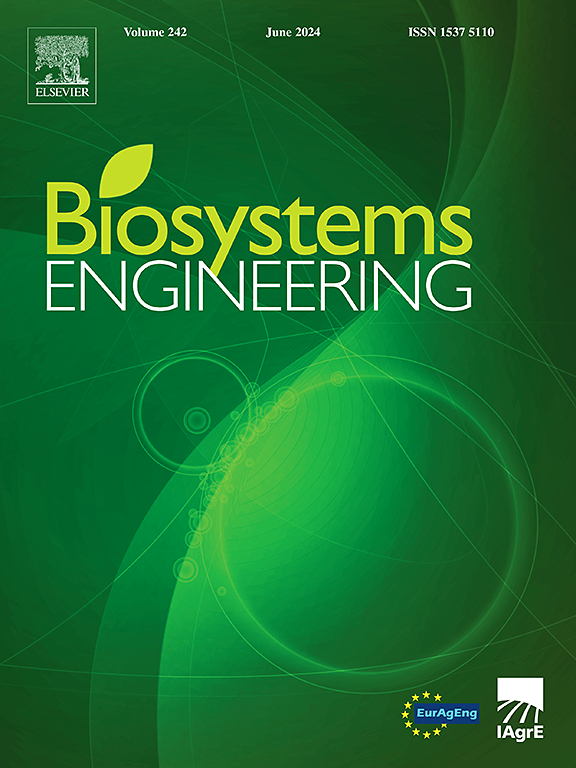Revealing hydrodynamic key factors in dripper clogging: A coupled optical coherence tomography and numerical milli-fluidic simulation
IF 5.3
1区 农林科学
Q1 AGRICULTURAL ENGINEERING
引用次数: 0
Abstract
This study introduces a novel method for analysing emitter clogging in drip irrigation systems by comparing optical tomography images (OCT) of clogging with hydrodynamic modelling (CFD) through statistical analysis. Utilising Principal Component Analysis (PCA) on data coming from modelling and images on a comparable format, turbulence kinetic energy was identified as the key hydrodynamic parameter influencing both kaolinite and biological clogging. The results indicate that turbulence kinetic energy is minimal at the inlet, correlating with the most severe clogging observed in this region. Two flow conditions were tested, with Reynolds numbers of 300 and 400. The higher Reynolds number (400) resulted in accelerated biofilm development and reduced kaolinite clogging compared to the lower Reynolds number (300), indicating a feeding effect correlated to flow speed and shear stress. This methodology offers new ways to study the relationship between modelling and images, leading to insights to understand mechanisms and optimise dripper designs. This method enables the determination of clogging localisation within drippers based on their geometry and can therefore be applied to various designs to enhance maintenance.

揭示滴管堵塞的流体动力学关键因素:耦合光学相干层析成像和数值微流体模拟
本文介绍了一种分析滴灌系统中灌水器堵塞的新方法,通过统计分析将光学断层扫描图像(OCT)与流体动力学模型(CFD)进行比较。利用主成分分析(PCA)对来自建模和类似格式图像的数据进行分析,湍流动能被确定为影响高岭石和生物堵塞的关键流体动力学参数。结果表明,在入口处湍流动能最小,这与该区域观察到的最严重堵塞有关。试验了两种流动条件,雷诺数分别为300和400。与较低雷诺数(300)相比,较高的雷诺数(400)加速了生物膜的发育,减少了高岭石堵塞,表明进料效应与流速和剪切应力相关。这种方法提供了新的方法来研究建模和图像之间的关系,从而深入了解机制和优化滴管设计。该方法可以根据滴管的几何形状确定其堵塞位置,因此可以应用于各种设计,以加强维护。
本文章由计算机程序翻译,如有差异,请以英文原文为准。
求助全文
约1分钟内获得全文
求助全文
来源期刊

Biosystems Engineering
农林科学-农业工程
CiteScore
10.60
自引率
7.80%
发文量
239
审稿时长
53 days
期刊介绍:
Biosystems Engineering publishes research in engineering and the physical sciences that represent advances in understanding or modelling of the performance of biological systems for sustainable developments in land use and the environment, agriculture and amenity, bioproduction processes and the food chain. The subject matter of the journal reflects the wide range and interdisciplinary nature of research in engineering for biological systems.
 求助内容:
求助内容: 应助结果提醒方式:
应助结果提醒方式:


